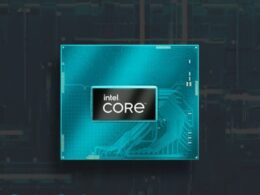The edge of the network isn’t always where you find the most powerful computers. But it is the place where you can find the most ubiquitous technology. The edge includes devices like smartphones, desktop PCs, laptops, tablets, and other smart gadgets that operate on their own processors, with internet access and the potential to connect to the cloud. Companies like Intel are now exploring the possibilities of AI at the edge and its potential impact on our lives.
The Vision of AI at the Edge
At the recent Intel Innovation 2023 conference, I had the opportunity to speak with Intel exec Sandra Rivera and Pallavi Mahajan, the corporate vice president and general manager for Networking and Edge (NEX) software engineering. Mahajan highlighted one of the key benefits of AI at the edge: the ability to have a conversation with our devices. For example, we can ask our desktop when we last spoke with someone, and it will quickly search through our history and provide an answer. This level of instant information retrieval is made possible by the advancements in AI at the edge.
“I think [AI at the edge] will enable us to have a conversation with our desktop. We can ask it when was the last time I talked with someone, and it will search through our history of work and figure that out and give us an answer almost instantly.”
– Pallavi Mahajan, Corporate Vice President and GM for Networking and Edge (NEX) Software Engineering at Intel
The Evolution of the Edge
Mahajan further explained that the edge is not just limited to individual devices but extends to various sectors, including telcos, industrial machines, and retail chains. Intel’s Network and Edge (NEX) group was specifically created to focus on this expanding area. The COVID-19 pandemic has accelerated the need for automation, with enterprises looking to adopt technologies like AI to optimize their processes. Industries like automobile manufacturing and retail have quickly embraced automation to adapt to changing circumstances.
“Everything, the Fit:match, the Fabletics experience that you saw, the remind experience that you saw where Dan talked about how he can actually go out and have his PC automatically generate an email to others. All of this, in very different wave forms, is enabled by the technology that we develop here at NEX.”
– Pallavi Mahajan, Corporate Vice President and GM for Networking and Edge (NEX) Software Engineering at Intel
The Role of Hybrid AI
The integration of AI at the edge brings forth the concept of hybrid AI, where a combination of cloud and edge computing is leveraged. Mahajan emphasized that while large language models and generative AI reside in the cloud, smaller models can be deployed at the edge or on personal devices like laptops. This hybrid approach ensures a balance between computational efficiency, cost-effectiveness, and real-time decision-making.
“Generative AI is a perfect example of how this is going to balance the pendulum swing… It’s going to be a hybrid AI play where the model is going to be sitting in the cloud and part of the model is actually going to get inferred on the edge.”
– Pallavi Mahajan, Corporate Vice President and GM for Networking and Edge (NEX) Software Engineering at Intel
Furthermore, security is a major concern when it comes to AI at the edge. Mahajan highlighted the importance of incorporating security measures into every layer of edge devices to protect sensitive proprietary data. Intel’s Project Strata aims to provide a secure and trusted ecosystem for edge devices, ensuring the integrity of models and workloads.
“Especially with AI, if I am now deploying my models over on these edge devices, model is like proprietary data. It’s my intellectual property. I want to make sure it’s very secure… The lack of solutions in this space was a reason why enterprises were hesitant in investing in edge. Now with all these solutions, and the fact that they want to automate more and more, there is going to be this huge growth in the end.”
– Pallavi Mahajan, Corporate Vice President and GM for Networking and Edge (NEX) Software Engineering at Intel










